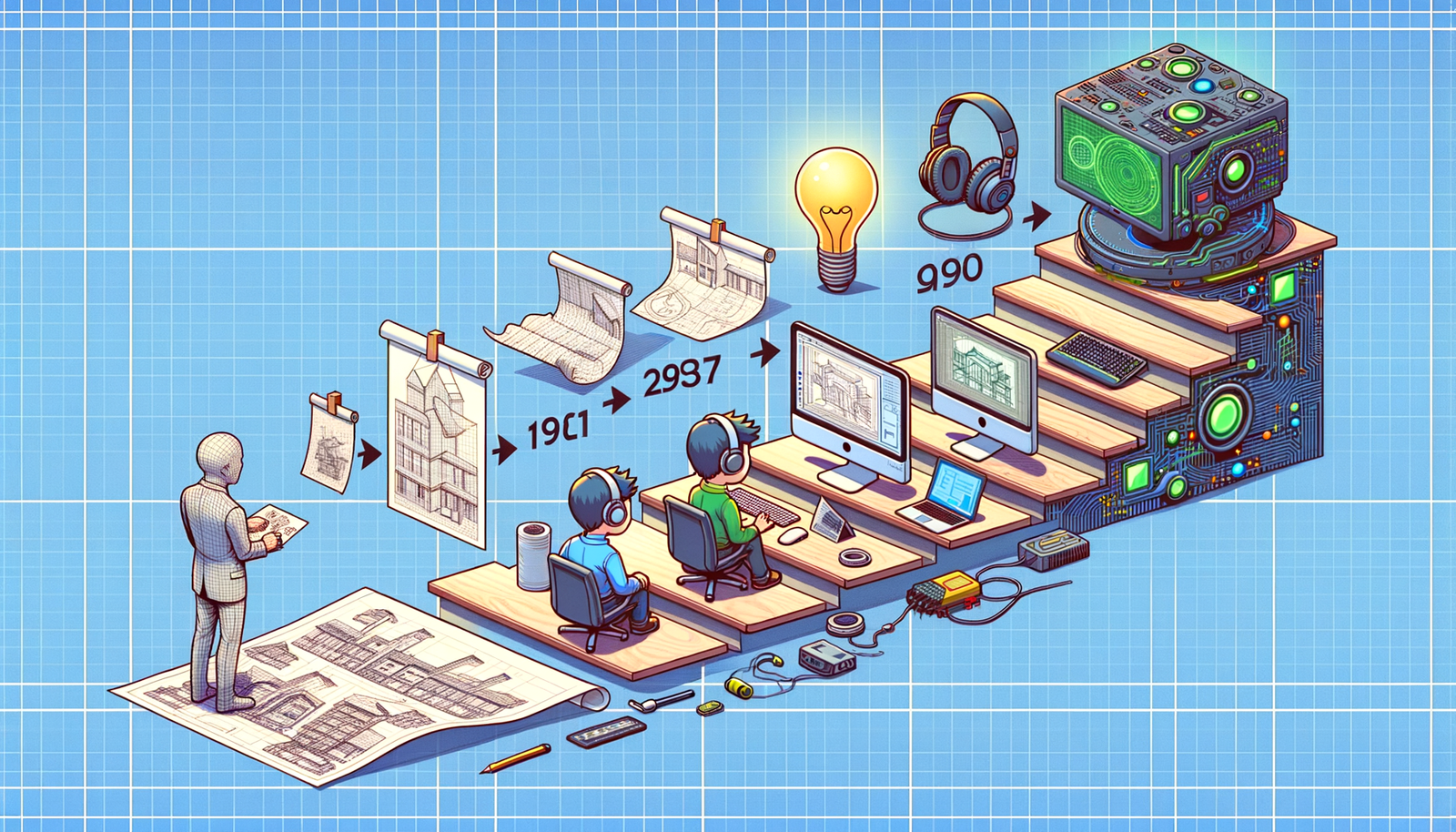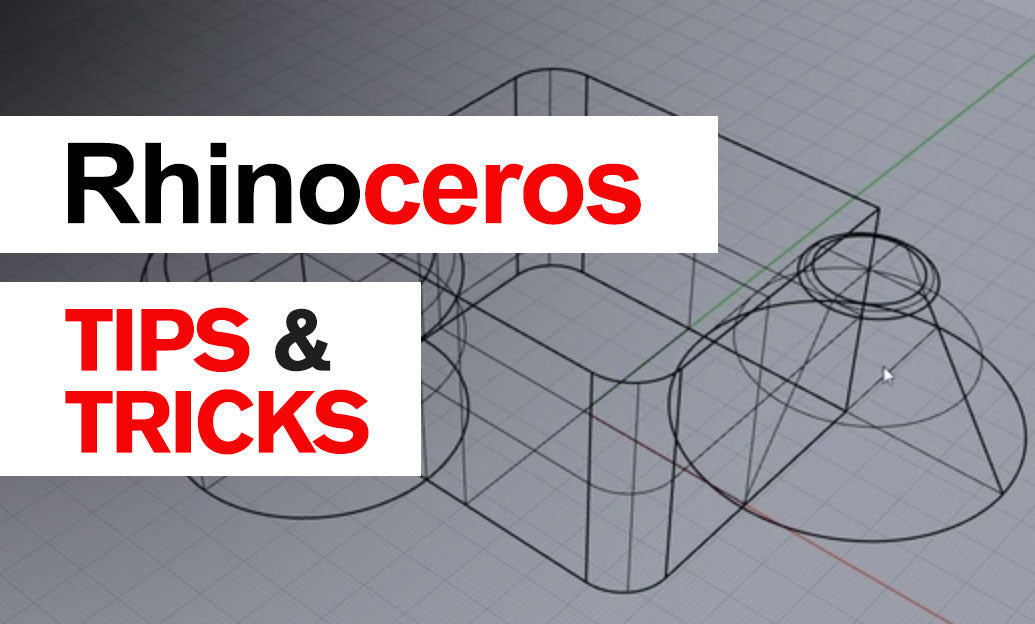Your Cart is Empty
Customer Testimonials
-
"Great customer service. The folks at Novedge were super helpful in navigating a somewhat complicated order including software upgrades and serial numbers in various stages of inactivity. They were friendly and helpful throughout the process.."
Ruben Ruckmark
"Quick & very helpful. We have been using Novedge for years and are very happy with their quick service when we need to make a purchase and excellent support resolving any issues."
Will Woodson
"Scott is the best. He reminds me about subscriptions dates, guides me in the correct direction for updates. He always responds promptly to me. He is literally the reason I continue to work with Novedge and will do so in the future."
Edward Mchugh
"Calvin Lok is “the man”. After my purchase of Sketchup 2021, he called me and provided step-by-step instructions to ease me through difficulties I was having with the setup of my new software."
Mike Borzage
Design Software History: Evolution of Rendering Techniques in Architectural Design: From Early Graphics to AI-Driven Solutions
January 15, 2025 9 min read


In the realm of architectural design, rendering techniques have emerged as indispensable tools that bridge the gap between conceptual ideas and tangible visualizations. Rendering, in this context, encompasses the process of generating realistic or non-photorealistic images from a two-dimensional or three-dimensional model by means of computer programs. This transformative capability is crucial in the modern architectural workflow, serving not only as a means for visualization but also as a powerful medium for communication and client presentations. By translating intricate architectural plans into vivid images, rendering allows architects to convey complex ideas effectively, facilitating better understanding and collaboration among stakeholders. The ability to produce lifelike representations of proposed designs enhances decision-making processes, ultimately contributing to the realization of architectural visions.
Definition and Importance
Rendering techniques in architectural design refer to the computational methods used to produce images or animations that accurately depict proposed architectural structures. These techniques simulate the effects of lighting, shading, texture mapping, and material properties to create visuals that can range from stylized artistic impressions to highly detailed photorealistic images. The importance of rendering lies in its multifaceted role within the architectural workflow. It serves as a critical tool for visualization, enabling architects to explore and refine their designs in a virtual environment. Rendering also facilitates effective communication by providing a visual language that transcends technical jargon, making it easier to convey architectural concepts to clients, contractors, and stakeholders. In client presentations, high-quality renderings can significantly enhance the persuasive impact of proposals, helping clients to visualize and emotionally connect with the project.
Brief Historical Overview
The initial integration of rendering into architectural design can be traced back to the late 1960s and early 1970s, with the advent of computer graphics and early CAD systems. The University of Utah's computer graphics program, led by pioneers like Ivan Sutherland and David Evans, laid the foundation for 3D modeling and rendering technologies. Early innovations included basic wireframe models and simple shading techniques, which were significant at the time but limited in their ability to produce realistic images. The 1980s and 1990s saw a surge in digital advancements, with companies like Autodesk, founded by John Walker in 1982, introducing software like AutoCAD that revolutionized architectural drafting and modeling. These developments set the stage for future rendering advancements by providing architects with tools to create detailed digital models that could be enhanced with rendering techniques.
Early Developments in Rendering Techniques
The early developments in rendering techniques were marked by the introduction of pioneering software that incorporated basic rendering functionalities. SketchUp, developed by @Last Software and released in 2000, was a game-changer due to its user-friendly interface and accessible tools for 3D modeling. Brad Schell and Joe Esch, the founders of @Last Software, envisioned a tool that allowed designers to easily conceptualize and visualize ideas in three dimensions. SketchUp's initial versions included rudimentary rendering features, enabling users to apply colors and basic textures to models. AutoCAD, on the other hand, began integrating rendering capabilities in the mid-1990s, allowing for shaded and textured views of 3D models. These early software solutions provided architects with the ability to produce visual representations of their designs beyond simple line drawings.
The contributions of companies like Autodesk and individuals such as John Walker were instrumental in advancing rendering technologies. Autodesk's commitment to continuous improvement led to the development of 3D Studio Max (now known as 3ds Max) in 1996, a software that offered more advanced rendering and animation capabilities. The ability to create more realistic images opened new possibilities for architects, enabling them to present their designs in ways that were previously unattainable. These early tools, while limited compared to modern standards, established the foundational technologies and workflows that would be expanded upon in subsequent years.
Technological Foundations
The technological foundations of early rendering techniques were rooted in fundamental mathematical models and computer graphics principles. Rendering algorithms like ray casting and scanline rendering were developed to simulate how light interacts with objects. The Phong reflection model, introduced by Bui Tuong Phong in 1975, was a significant advancement that enabled more realistic shading of surfaces by considering ambient, diffuse, and specular reflections. These mathematical models allowed for the calculation of light intensity and color on surfaces, contributing to the realism of rendered images.
Graphics hardware during this period was relatively primitive, with early GPUs lacking the processing power required for complex rendering tasks. Companies like Silicon Graphics (SGI), founded by Jim Clark in 1981, began producing high-performance graphics workstations that were utilized in fields requiring advanced visualization, including architecture. However, these systems were expensive and not widely accessible. The limitations of early GPUs meant that rendering was often a time-consuming process, restricted to low-resolution outputs and simplified models. Despite these challenges, the groundwork laid by these technologies was critical for the subsequent evolution of rendering techniques as hardware capabilities improved.
Evolution of Rendering Technologies
The progression of rendering technologies gained significant momentum with advancements in both software and hardware. The introduction of rendering engines like V-Ray, developed by Chaos Group in 1997, marked a turning point. V-Ray brought sophisticated global illumination algorithms and physically accurate lighting models to the architectural community. Vlado Koylazov and Peter Mitev, the founders of Chaos Group, focused on creating a rendering engine that balanced speed and quality, making high-end rendering more accessible.
Enscape and Lumion are other notable advancements, offering real-time rendering solutions that dramatically improved workflow efficiency. Enscape, developed by Thomas Schander and Moritz Luck, integrates directly with BIM software like Revit and SketchUp, providing instant visual feedback and immersive walkthroughs. Lumion, created by Act-3D, offers an extensive content library and intuitive interface, enabling users to produce high-quality visuals swiftly. These tools facilitated the transition from traditional rasterization techniques to ray tracing and real-time rendering, leveraging advancements in GPU technology and parallel processing.
Key developments included the implementation of physically based rendering (PBR), which uses algorithms to simulate real-world materials and lighting with greater accuracy. This advancement allowed for more realistic representations of materials like glass, metal, and fabrics. Additionally, the adoption of high dynamic range imaging (HDRI) and image-based lighting enhanced the realism of environments and global illumination effects. The cumulative impact of these technologies was a dramatic increase in the quality and speed of architectural renderings, making them integral to the design process.
Advancements in Rendering Engines
The evolution of rendering engines has been driven by the pursuit of higher realism and faster rendering times. V-Ray's integration of advanced features like distributed rendering and adaptive sampling improved both the efficiency and quality of renderings. Similarly, Enscape's utilization of real-time ray tracing algorithms allowed for instantaneous visualization of changes, promoting a more iterative design approach. Lumion's focus on ease of use and real-time feedback made it popular among architects who needed to produce compelling visuals without extensive rendering knowledge.
Advancements were also seen in material libraries and texture mapping techniques, which allowed for more accurate depiction of surfaces and finishes. The inclusion of physically accurate lighting simulations enabled architects to study the effects of natural and artificial light on their designs, contributing to more informed decisions regarding energy efficiency and occupant comfort. The role of GPUs became increasingly significant, with companies like NVIDIA, under the leadership of Jensen Huang, developing powerful graphics cards and technologies such as CUDA and RTX that accelerated rendering processes. These advancements not only improved rendering speeds but also made real-time, high-fidelity rendering accessible to a broader audience.
Key contributions in this area can be summarized as:
- Implementation of physically based rendering (PBR): Enhanced material realism by simulating physical properties.
- Development of real-time rendering engines: Enabled immediate visualization and interactive design processes.
- Advancements in GPU technology: Increased computational power facilitated complex rendering tasks.
- Integration with BIM software: Streamlined workflows by connecting modeling and rendering processes.
Real-world Influences and Integration
The evolution of architectural rendering did not occur in isolation but was significantly influenced by advancements in other industries, notably gaming and film. The gaming industry's demand for realistic, real-time graphics pushed hardware and software developers to innovate. Techniques such as normal mapping, tessellation, and shader programming, developed for games, were adapted for architectural visualization. Companies like Epic Games, led by Tim Sweeney, contributed technologies like the Unreal Engine, which architects began using for high-end visualizations and VR experiences.
Collaborations between software developers and hardware manufacturers played a crucial role. For instance, the partnership between Autodesk and NVIDIA led to optimized rendering capabilities in software like 3ds Max and Revit, utilizing NVIDIA's Quadro GPUs. Cross-industry technologies such as OpenGL and DirectX, initially developed for gaming, provided the graphical frameworks that rendering software leveraged. The film industry's utilization of advanced rendering techniques for visual effects, spearheaded by companies like Pixar with their RenderMan software, also influenced architectural rendering, especially in terms of achieving photorealism and complex lighting scenarios.
Modern Trends and the Future of Architectural Rendering
Currently, architectural rendering is experiencing trends that emphasize immersion, interactivity, and integration of cutting-edge technologies. Photorealistic rendering has become the norm, with clients expecting visuals that closely mimic real-life conditions. The rise of interactive and real-time rendering allows architects to explore designs dynamically, making design iterations more fluid. Virtual reality (VR) and augmented reality (AR) integrations have transformed client presentations, providing immersive experiences that traditional renderings cannot offer.
Modern software tools exemplifying these trends include Autodesk's 3ds Max and Revit, which offer robust rendering capabilities and support for VR/AR workflows. Adobe's acquisition of Allegorithmic and integration of the Substance suite has enhanced material creation, allowing for detailed and realistic textures. Companies like Unity Technologies, led by CEO John Riccitiello, have made their game engine accessible for architectural visualization, supporting interactive 3D and VR experiences. These tools, combined with cloud rendering services like NVIDIA's RTX Server and Chaos Cloud, offer unprecedented capabilities for rendering complex scenes quickly and efficiently.
Current Trends
The integration of artificial intelligence (AI) and machine learning in rendering processes is an emerging trend with significant potential. AI-powered denoising algorithms reduce noise in rendered images, allowing high-quality results with fewer computational resources. NVIDIA's OptiX AI-Accelerated Denoiser is an example of such technology. Additionally, procedural generation of materials and environments, driven by AI, can automate aspects of the rendering process, increasing efficiency. Sustainability considerations are also influencing rendering practices, with software developers optimizing rendering engines for energy efficiency and supporting simulations of sustainable building features.
Key current trends include:
- AI-driven rendering enhancements: Leveraging AI for faster and more efficient rendering processes.
- Interactive and real-time rendering: Facilitating immediate feedback and immersive design exploration.
- Integration of VR/AR technologies: Enhancing presentation and experiential aspects of architectural design.
- Cloud-based rendering solutions: Providing scalable resources for complex rendering tasks.
- Focus on sustainability: Incorporating energy-efficient rendering practices and supporting sustainable design simulations.
Future Outlook
Anticipating future developments, rendering techniques are expected to become even more integrated with AI, leading to hyper-realistic virtual environments generated with minimal manual input. AI could analyze design parameters and automatically generate optimal lighting, materials, and environmental conditions. The advancement of neural rendering, which uses neural networks to create images, might revolutionize how renderings are produced. Furthermore, the convergence of rendering technologies with building information modeling (BIM) and other design tools will streamline workflows, enabling real-time collaboration and design adjustments across distributed teams.
The impact of sustainability and energy efficiency requirements will likely drive rendering software towards simulating not only the visual aspects but also the performance characteristics of materials and systems. Architects may use rendering tools to visualize and optimize energy consumption, daylighting, and thermal comfort, integrating these considerations into the early design phases. The development of more advanced VR and AR technologies will also enhance the ability to simulate occupant experiences, aiding in the creation of spaces that are both aesthetically pleasing and functionally efficient.
Conclusion
The journey of rendering techniques in architectural design reflects a continuous evolution fueled by technological innovation and interdisciplinary collaboration. From the humble beginnings of basic wireframe models to the sophisticated, immersive experiences available today, each advancement has expanded the possibilities for architects to visualize and communicate their ideas. The impact of companies like Autodesk, Chaos Group, and NVIDIA, along with visionaries such as John Walker, Vlado Koylazov, and Jensen Huang, has been instrumental in shaping the tools and technologies that define modern architectural rendering.
As we stand on the cusp of further advancements, it is clear that rendering technologies will continue to transform architectural design processes. The integration of AI, real-time rendering, and immersive technologies promises to enhance not only the visual quality of renderings but also the efficiency and sustainability of architectural projects. The ongoing journey is one of relentless pursuit of innovation, driven by the desire to create more compelling, efficient, and sustainable designs.
In this context, there is a call to action for architects, software developers, and industry stakeholders to continue pushing the boundaries of what is possible. By embracing new technologies and fostering collaborative innovation, the architectural community can harness rendering techniques to enhance design capabilities and deliver more impactful user experiences. The future of architectural rendering holds immense potential, and it is through continued exploration and development that this potential will be realized.
Also in Design News

Cinema 4D Tip: Matrix-Driven Instancing for High-Performance Scattering
December 20, 2025 2 min read
Read More
V-Ray Tip: V-Ray Anisotropy Techniques for Brushed Metals and Hair
December 20, 2025 2 min read
Read MoreSubscribe
Sign up to get the latest on sales, new releases and more …



